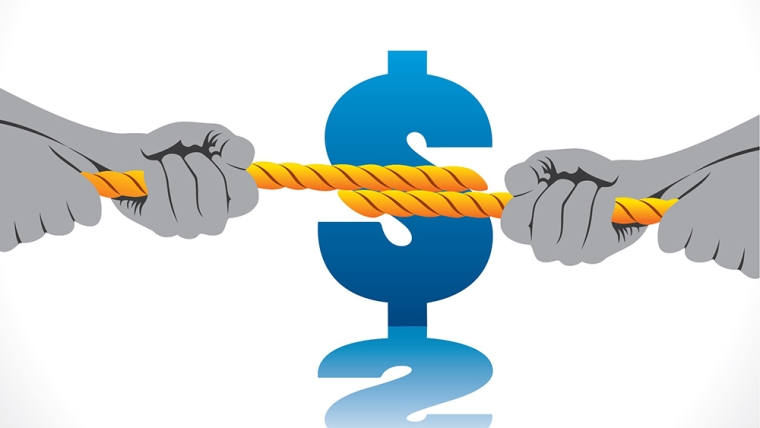
Despite favourable indices, it is too soon to tell whether inflation has been tamed. Nonetheless, two clear lessons have emerged from the recent price surge.
First, economists’ standard models – especially the dominant one that assumes the economy always to be in equilibrium – were effectively useless. And, second, those who confidently asserted that it would take five years of pain to wring inflation out of the system have already been refuted. Inflation has fallen dramatically, with the December 2022 seasonally adjusted consumer price index coming in just 1% above that for June.
There is overwhelming evidence that the main source of inflation was pandemic-related supply shocks and shifts in the pattern of demand, not excess aggregate demand, and certainly not any additional demand created by pandemic spending. Anyone with any faith in the market economy knew that the supply issues would be resolved eventually; but no one could possibly know when.
After all, we have never endured a pandemic-driven economic shutdown followed by a rapid reopening. That is why models based on past experience proved irrelevant. Still, we could anticipate that clearing supply bottlenecks would be disinflationary, even if this would not necessarily counteract the earlier inflationary process immediately or in full, owing to markets’ tendency to adjust upward more rapidly than they adjust downward.
Policymakers continue to balance the risk of doing too little versus doing too much. The risks of increasing interest rates are clear: a fragile global economy could be pushed into recession, precipitating more debt crises as many heavily indebted emerging and developing economies face the triple whammy of a strong dollar, lower export revenues, and higher interest rates. This would be a travesty. After already letting people die unnecessarily by refusing to share the intellectual property for COVID-19 vaccines, the United States has knowingly adopted a policy that will likely sink the world’s most vulnerable economies. This is hardly a winning strategy for a country that has launched a new cold war with China.
Worse, it is not even clear that there is any upside to this approach. In fact, raising interest rates could do more harm than good, by making it more expensive for firms to invest in solutions to the current supply constraints. The US Federal Reserve’s monetary-policy tightening has already curtailed housing construction, even though more supply is precisely what is needed to bring down one of the biggest sources of inflation: housing costs.
Moreover, many price-setters in the housing market may now pass the higher costs of doing business on to renters. And in retail and other markets more broadly, higher interest rates can actually induce price increases as the higher interest rates induce businesses to write down the future value of lost customers relative to the benefits today of higher prices.
To be sure, a deep recession would tame inflation. But why would we invite that? Fed Chair Jerome Powell and his colleagues seem to relish cheering against the economy. Meanwhile, their friends in commercial banking are making out like bandits now that the Fed is paying 4.4% interest on more than $3 trillion of bank reserve balances – yielding a tidy return of more than $130 billion per year.
To justify all this, the Fed points to the usual bogeymen: runaway inflation, a wage-price spiral, and unanchored inflation expectations. But where are these bogeymen? Not only is inflation falling, but wages are increasing more slowly than prices (meaning no spiral), and expectations remain in check. The five-year, five-year forward expectation rate is hovering just above 2% – hardly unanchored.
Some also fear that we will not return quickly enough to the 2% target inflation rate. But remember, that number was pulled out of thin air. It has no economic significance, nor is there any evidence to suggest that it would be costly to the economy if inflation were to vary between, say, 2% and 4%. On the contrary, given the need for structural changes in the economy and downward rigidities in prices, a slightly higher inflation target has much to recommend it.
Some also will say that inflation has remained tame precisely because central banks have signaled such resolve in fighting it. My dog Woofie might have drawn the same conclusion whenever he barked at planes flying over our house. He might have believed that he had scared them off, and that not barking would have increased the risk of the plane falling on him.
One would hope that modern economic analysis would dig deeper than Woofie ever did. A careful look at what is going on, and at where prices have come down, supports the structuralist view that inflation was driven mainly by supply-side disruptions and shifts in the pattern of demand. As these issues are resolved, inflation is likely to continue to come down.
Yes, it is too soon to tell precisely when inflation will be fully tamed. And no one knows what new shocks await us. But I am still putting my money on “Team Temporary.” Those arguing that inflation will be largely cured on its own (and that the process could be hastened by policies to alleviate supply constraints) still have a much stronger case than those advocating measures with obviously high and persistent costs but only dubious benefits.
*Joseph E. Stiglitz, a Nobel laureate in economics, is University Professor at Columbia University and a member of the Independent Commission for the Reform of International Corporate Taxation. Copyright: Project Syndicate, 2023, and published here with permission.
14 Comments
When the only tool you have is a hammer, every problem becomes a nail.
I'm surprised he seems to give little weight to the contribution of money printing to inflation.
What do you mean by money printing? Govt spending more than it taxed for a period of time? Or, Reserve Banks buying bonds back on the secondary market (QE)?
Possibly referring to unfettered credit creation for the property Ponzi
Credit creation happens at the commercial bank level, not central bank or Treasury level. The Fed and all central banks fake their control of the financial system by watching and following the bond market. The 2 year rate is their favourite and use it to base their own rate work, not the other way around. They buy and sell bonds to control their currency exchange rates in the main. All this 'tightening' we are seeing is not about inflation because those number are a bunch of BS. It's all about putting the interest and currency exchange screws on emerging economies, bringing them to the point of collapse, keeping them heavily indebted to US and IMF funders, keeping them under western thumbs to stop them going the way of BRICS.
You only need to raise rates to where things begin to turn, and then wait. This is exactly what banks are doing.
Bingo my friend.
Eurodollar University is one of my guilty pleasures on YouTube and I highly rate Sean Foo content when he deep dives into monetary system topics. I've become highly selective in my financial channel viewing now that the puzzle has started to take shape and reveal itself. I've pieced together an awful lot about how the monetary system REALLY works this past year. Now I see how much of the financial news spewed at us on a daily basis is easily spotted propaganda for the masses. There is also something to be said for watching English speaking non western news sources too for revealing more reality.
The interest that the banks receive on their reserves is not profit as they incur costs from making payments on behalf of the treasury and they have to pay interest themselves on the bank deposits which are created from the governments spending.
Pardon? The NZ banks currently have $50bn of reserves with RBNZ earning OCR, but they have also taken out $19bn of loans (FLP) at OCR. So the net interest flow from RBNZ to the Banks is 4.25% x $31bn = about $1.4bn a year. The total operating expenses of NZ banks (including buildings, IT, all their staff, call centres etc etc) is about $6bn per year. The cost of making payments 'on behalf of the Treasury' is negligible.
If you look at the RBNZ dataset S21 you can see that the banks typically receive three times as much interest as they pay out. Every month at the moment, the banks are taking in $2.1bn in interest payments, paying out about $800m to savers, $800m to shareholders in dividends, and $240m to the Govt in taxes.
The banks don't lend their reserves out though so they will only make a profit margin if they pay less interest on the deposits created from the governments spending than they receive in interest on their reserves. The FLP may be a different matter granted, but might be unique to NZ.
Agree, but NZ transaction bank accounts in receipt of government transfer payments are unlikely to demand deposit rates as high as wealthy term deposit clients and OCR. ANZ Online account rate - 1.95%
So? We ran low interest rate long after it was clearly having a deleterious effect on society. Reserve Banks don't get to pick and choose when they aim to meet inflation targets and when not too, that's how we ended up in this mess to begin with.
Suppressing the price of money is both a strategy and a tactic to goose the economy. It works until it doesn't.

We welcome your comments below. If you are not already registered, please register to comment
Remember we welcome robust, respectful and insightful debate. We don't welcome abusive or defamatory comments and will de-register those repeatedly making such comments. Our current comment policy is here.